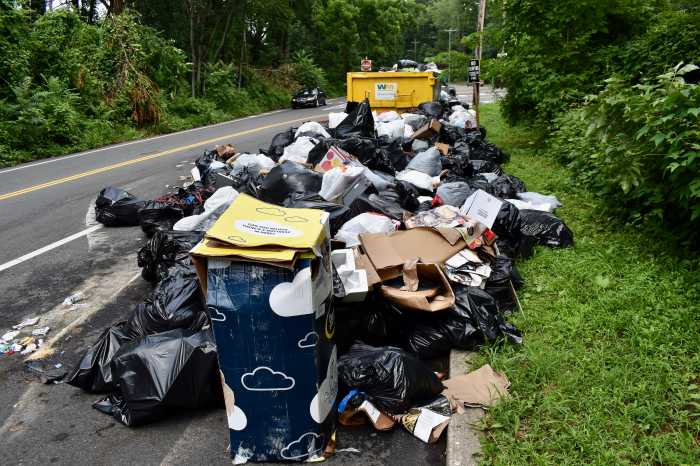On July 15, seven people were killed in Bucks County, when a flash flood caused by torrential rainfall overwhelmed local motorists, sweeping them into Houghs Creek, a tributary of the Delaware River.
While these deaths were tragic beyond words, they may have also been preventable.
Rivers and streams flood naturally because of large rainstorms or snowmelt, but human influences like dams, agricultural practices, and development in floodplains increase the magnitude of these events. Furthermore, scientists confirm that both the frequency and intensity of floods are increasing due to burning fossil fuels and other human activity that releases greenhouse gasses, according to PBS NewsHour.
Many factors contributed to the flash flood that took those innocent lives –including building roads in the Houghs Creek area that is designated as a special flood hazard area by FEMA – and scientists have been warning for decades that man-made carbon pollution will continue to cause temperatures everywhere to rise, fueling heavy rainfall events like this.
“A warmer atmosphere holds more water vapor,” said Dr. Michael Mann, Professor in the Department of Earth and Environmental Science at the University of Pennsylvania. “These disasters are being driven by the warming of the planet, and they won’t stop until carbon emissions reach zero. So there is a direct impact we can have by getting off fossil fuels.”
Pennsylvania ranks fourth in the country for total carbon pollution. Between 2020 and 2021, carbon emissions in the state increased by 10.5%, driving energy-related carbon dioxide pollution to approximately 266 million metric tons.
Production of coal, oil, and natural gas accounted for nearly 90 percent of these emissions, despite the proven results of green energy initiatives like wind, solar, and geothermal heat. This carbon pollution is the main culprit for greenhouse gasses and rising temperatures, according to leading scientists.
While it’s true that flash floods and fluctuating temperatures have been happening for millions of years, man-made carbon emissions have proven to be devastating to the planet since the Industrial Revolution, according to the National Oceanic and Atmospheric Administration.
In a report last month, NASA announced that June 2023 was officially the hottest month on record for the planet, a harbinger for the effects of global warming.
A respected climatologist, Dr. Mann said that flooding events have been worsened by human-caused climate change because it has spiked rainfall totals. “We must step back and ask why floods are getting worse, and who is responsible for that. And in this case, it’s appropriate to point the finger at fossil fuel companies and enabling politicians who have for years worked to deny the science of climate change and block efforts to get off fossil fuels.”
To be sure, many people still think that climate change is part of the planet’s natural cycle, and there is a minority of skeptics fueling misinformation about carbon emissions and its effect on our environment. But the vast majority of climate scientists – 97 percent – agree that humans are causing global warming and climate change.
In fact, most of the leading science institutes around the world have issued public statements expressing this, including the United Nations Intergovernmental Panel on Climate Change, international academies, and a host of reputable scientific bodies in every country.
Experts in the Delaware Valley agree that climate change has caused more floods in the Northeast region in recent years.
“Flooding is a natural part of any waterway’s life cycle,” said Maya van Rossum, Delaware Riverkeeper and member of the Delaware River Basin Interstate Flood Mitigation Task Force. “The problem is that human action, including carbon pollution, can actually create the conditions for massive flood damages and loss of life when the next major rainfall event happens.”
The task force was organized in the wake of the major floods along the Delaware River that took place over the course of 18 months in 2004, 2005, and 2006, and resulted in catastrophic flood damages.
Van Rossum explained that while planners used to focus on the 100-year floodplain as the area where flood loss should be expected, because of increasing flooding due to the climate crisis they now focus on the 500-year floodplain.
“Rather than take seriously the need to reduce fossil fuel use given its major contribution to climate change,” van Rossum said, “politicians in Pennsylvania have turned a blind eye to the need for legislation, regulation, programs, and investment that end fossil fuel extraction and advance clean renewable energy options.”
Although Governor Josh Shapiro did tour the flood damage, he was joined by a gaggle of Pennsylvania politicians who continually use green energy as a talking point, but have failed to respond to climate change in the state.
Yet the data is indisputable—emissions from the extraction, transportation, and use of fossil fuels is one of the reasons we now experience more severe weather, and the relationship between global warming and flash floods like the one in Bucks County must be examined if we hope to avoid more loss of life.

































